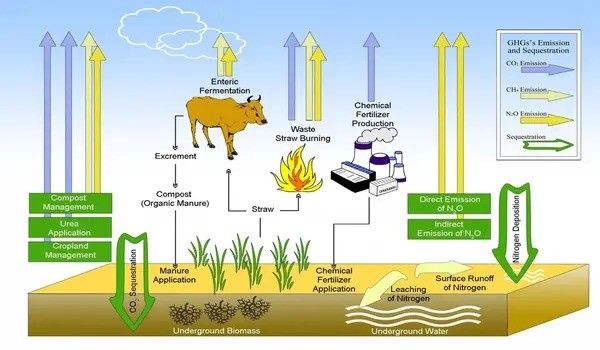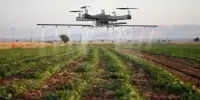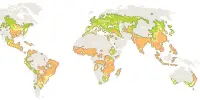Researchers at the University of Minnesota Twin Cities (UMN) and the University of Illinois Urbana-Champaign (UIUC) have demonstrated for the first time that accurate, high-resolution predictions of carbon cycles in agroecosystems can be made, potentially helping to mitigate the effects of climate change.
The study, conducted by researchers from the UMN-led National Artificial Intelligence Institute for Climate-Land Interactions, Mitigation, Adaptation, Tradeoffs, and Economy (AI-CLIMATE) and the UIUC-led Agroecosystem Sustainability Center, was recently published in Nature Communications, a peer-reviewed, open access scientific journal.
The study’s findings are an important first step in developing a credible Measurement, Monitoring, Reporting, and Verification (MMRV) of agricultural emissions that may be used to encourage the adoption of climate-smart practices while also boosting rural economy. This is consistent with the White House’s national policy, which emphasizes the importance of quantifying greenhouse gas emissions across sectors with the objective of reaching net-zero emissions by 2050.
Accurate, scalable, and cost-effective monitoring and reporting of greenhouse gas emissions is required to validate so-called “carbon credits” or permits that offset greenhouse gas emissions. Farmers can get rewarded for initiatives that reduce greenhouse gas emissions. Agriculture accounts for about 25 percent of greenhouse gas emissions, but large corporations can be hesitant about purchasing these credits without knowing how much carbon is being stored.
KGML-ag combines the most advanced understanding of mechanisms in agriculture with the state-of-the-art AI techniques and thus offers a new powerful lens to monitor and manage our agricultural ecosystems.
Zhenong Jin
Right now, to accurately gather carbon data, a farmer would need to hire someone to come to their farm, take what is called a soil core (vertical profile of the soil), and send that back to the lab for analysis.
“To gather the amount of data needed at each individual farm, it could cost the farmers time and money that they may not be willing to give,” said Licheng Liu, the lead author and a research scientist in the University of Minnesota Department of Bioproducts and Biosystems Engineering.
The emerging field of Knowledge-Guided Machine Learning (KGML), pioneered by researchers at the University of Minnesota, combines the strength of artificial intelligence (AI) and process-based models from physical sciences. With observations in the United States Corn Belt, the KGML-ag framework significantly surpasses both process-based and pure machine learning models in accuracy, especially with limited data. Remarkably, KGML-ag operates over 10,000 times faster than traditional process-based models, delivering high-resolution and high-frequency predictions cost-effectively.

“These knowledge-guided machine learning (KGML) techniques are fundamentally more powerful than standard machine learning approaches and traditional models used by the scientific community to address environmental problems,” said Vipin Kumar, a University of Minnesota Regents Professor and William Norris Endowed Chair in the Department of Computer Science and Engineering and a researcher in the AI-CLIMATE Institute, whose group has pioneered the development of the KGML framework.
Instead of taking soil cores at every farm, with KGML-ag, researchers can use the power of satellite remote sensing, computational models, and AI to provide an estimate of carbon in each individual field. This allows for compensation to individual farmers that are fair and accurate. The researchers say this is key to fostering trust in carbon markets and supporting the adoption of sustainable practices.
“KGML-ag combines the most advanced understanding of mechanisms in agriculture with the state-of-the-art AI techniques and thus offers a new powerful lens to monitor and manage our agricultural ecosystems,” said Zhenong Jin, the corresponding author for this study and assistant professor in the University of Minnesota Department of Bioproducts and Biosystems Engineering, who co-leads the KGML special interest group in the AI-CLIMATE.
AI-CLIMATE researchers are now researching the possibilities of the KGML framework for forestry, exploiting its capabilities to address critical difficulties in sustainable forestry management as well as carbon capture and storage. The team is also looking into a KGML-based data assimilation approach to make more flexible use of the continuously expanding variety of satellite data.
“The KGML is one of the key research topics of the AI-CLIMATE,” said Shashi Shekhar, a University of Minnesota ADC Chair and Distinguished McKnight University Professor in the Department of Computer Science and Engineering and the lead researcher of the AI-CLIMATE Institute. “These initial results demonstrate the immense potential of AI for developing more accurate and cheaper methods for estimating emissions from agriculture. This may lubricate carbon markets and incentivize adoption of climate-smart practices.”
















